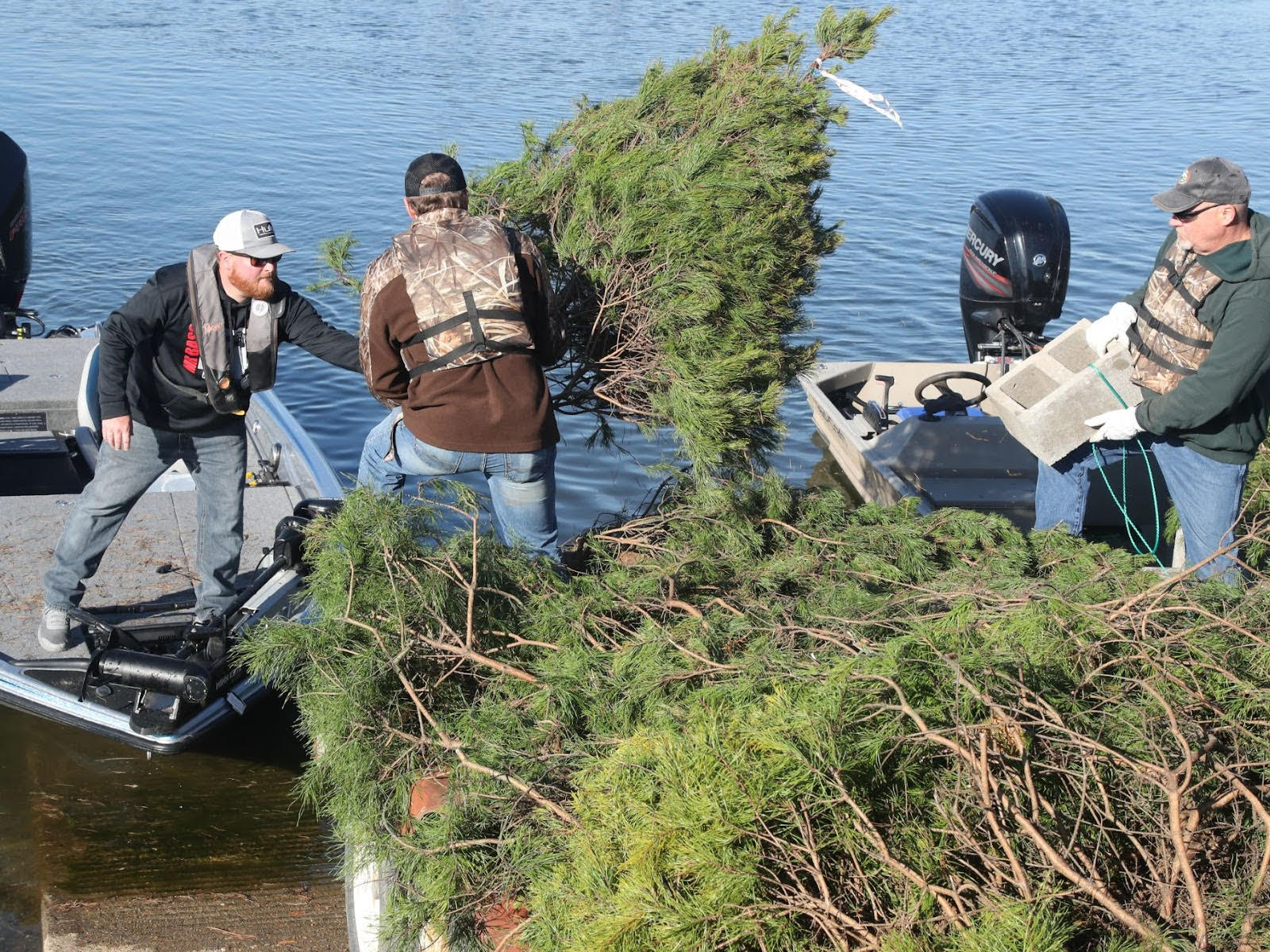Northwest Arkansas schools plant conservation roots at Bob Kidd Lake
ON 05-08-2025
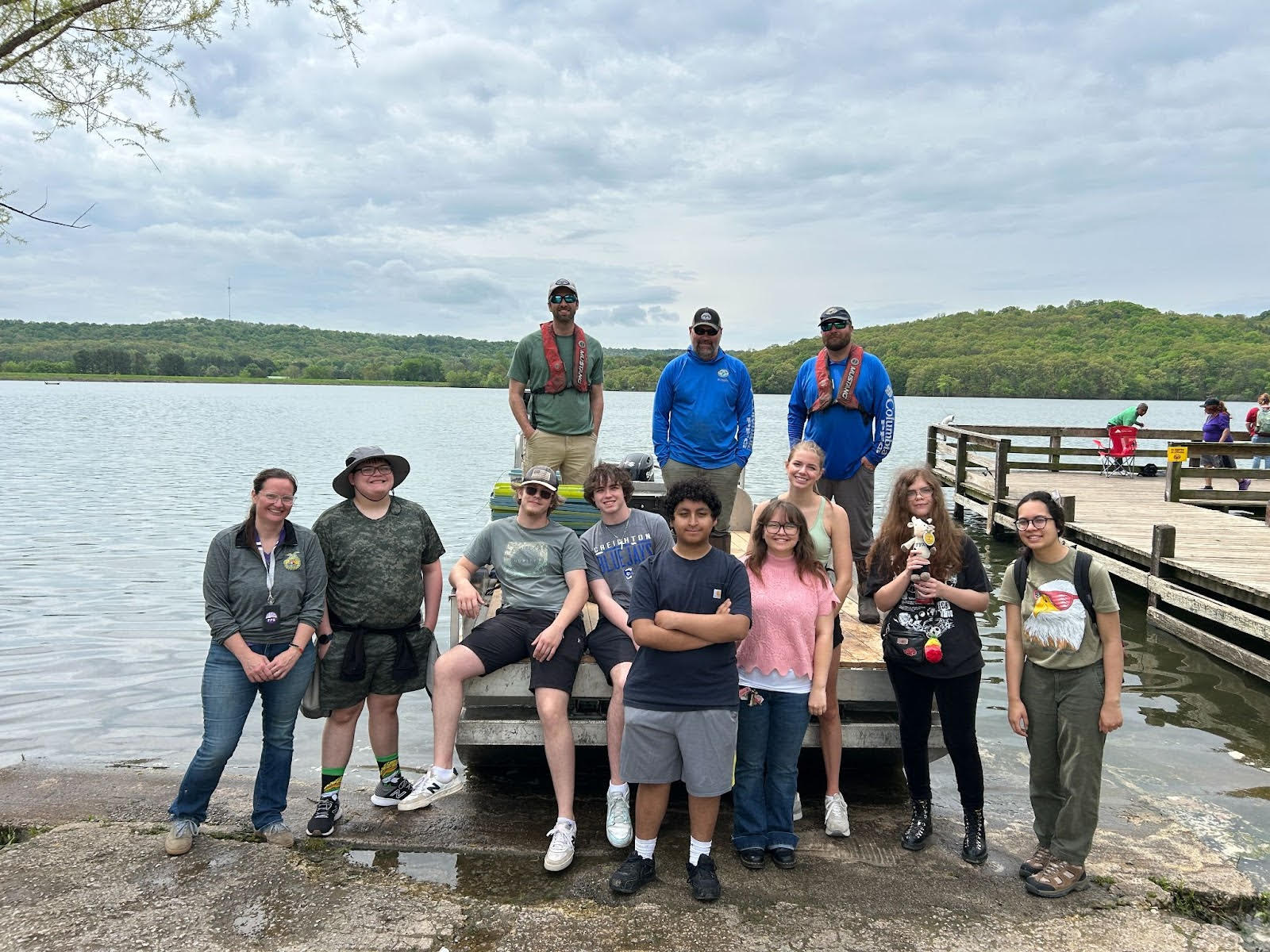
PRAIRIE GROVE — The Northwest Arkansas Fish Habitat Alliance and Arkansas Game and Fish Commission teamed up with seven Northwest Arkansas schools to improve water quality and fishing at Bob Kidd Lake by growing and planting native vegetation in the aging AGFC impoundment last month.
Students at Har-Ber High School in Springdale and six schools in Fayetteville (John L. Colbert Middle School, Owl Creek Elementary, Vandergriff Elementary, Happy Hollow Elementary, Fayetteville High School and ALLPS School of Innovation) planted an estimated 1,000 pots of American pondweed and 50 delta arrowhead plants in greenhouses on their school properties. Local businesses offered assistance, including donations of large tanks from ChemStation, a plastics manufacturing business in Springdale, as well as support from Terra Studios of Fayetteville.
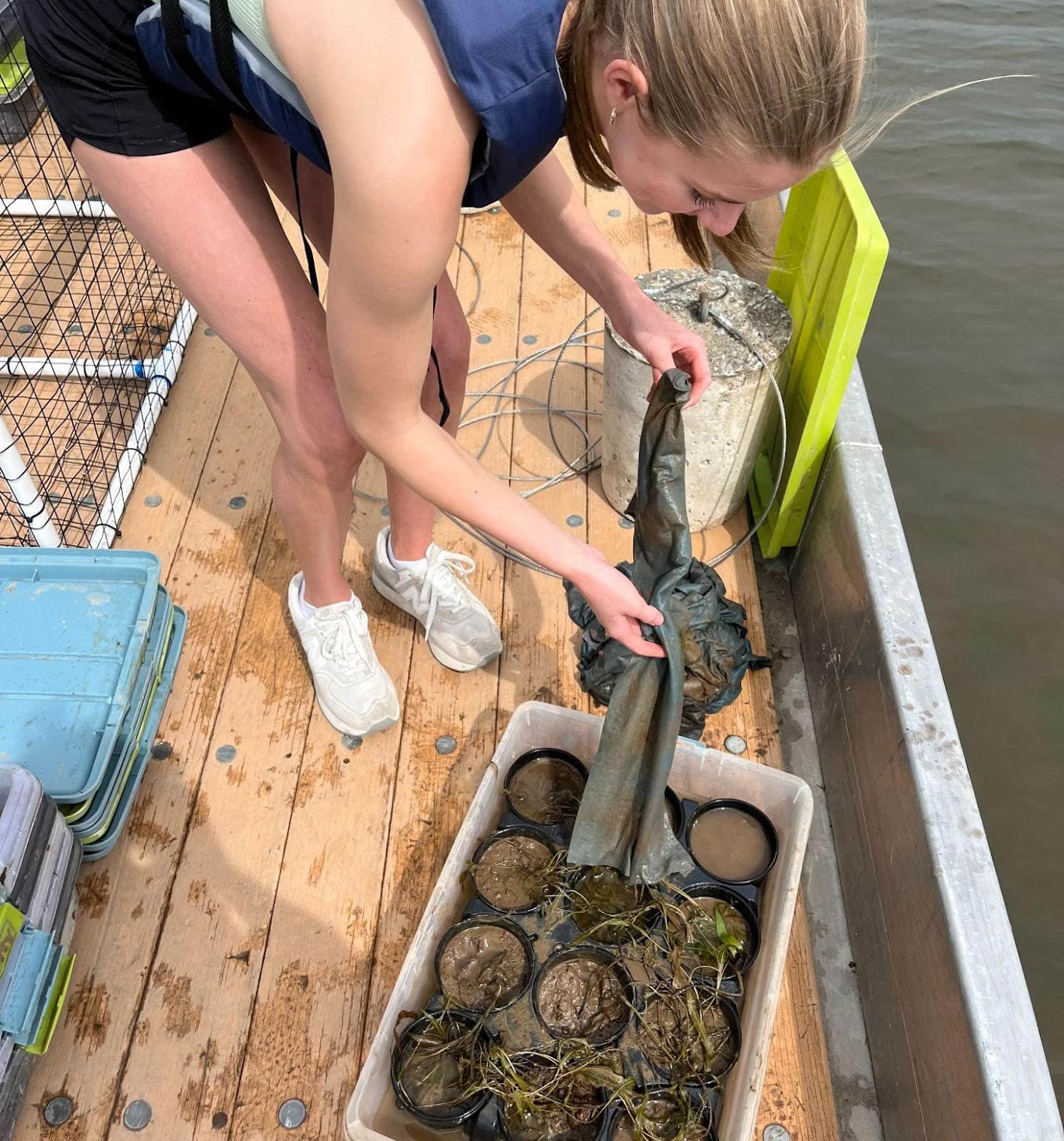
Justin Keen, Outdoor Education and Sustainability Specialist for the Fayetteville School District, was instrumental in establishing the project in Fayetteville.
“The program has made excellent use of four pre-existing greenhouses on school property,” Keen said. “They’ve been used over the years for things like pollinator gardens, but this has opened students’ eyes to another aspect of their use.”
Keen said students planted the vegetation and monitored it regularly to ensure that it was growing well. Some students even introduced native mosquitofish to the tubs where the plants were growing to eat mosquito larvae and learn how that interaction took place.
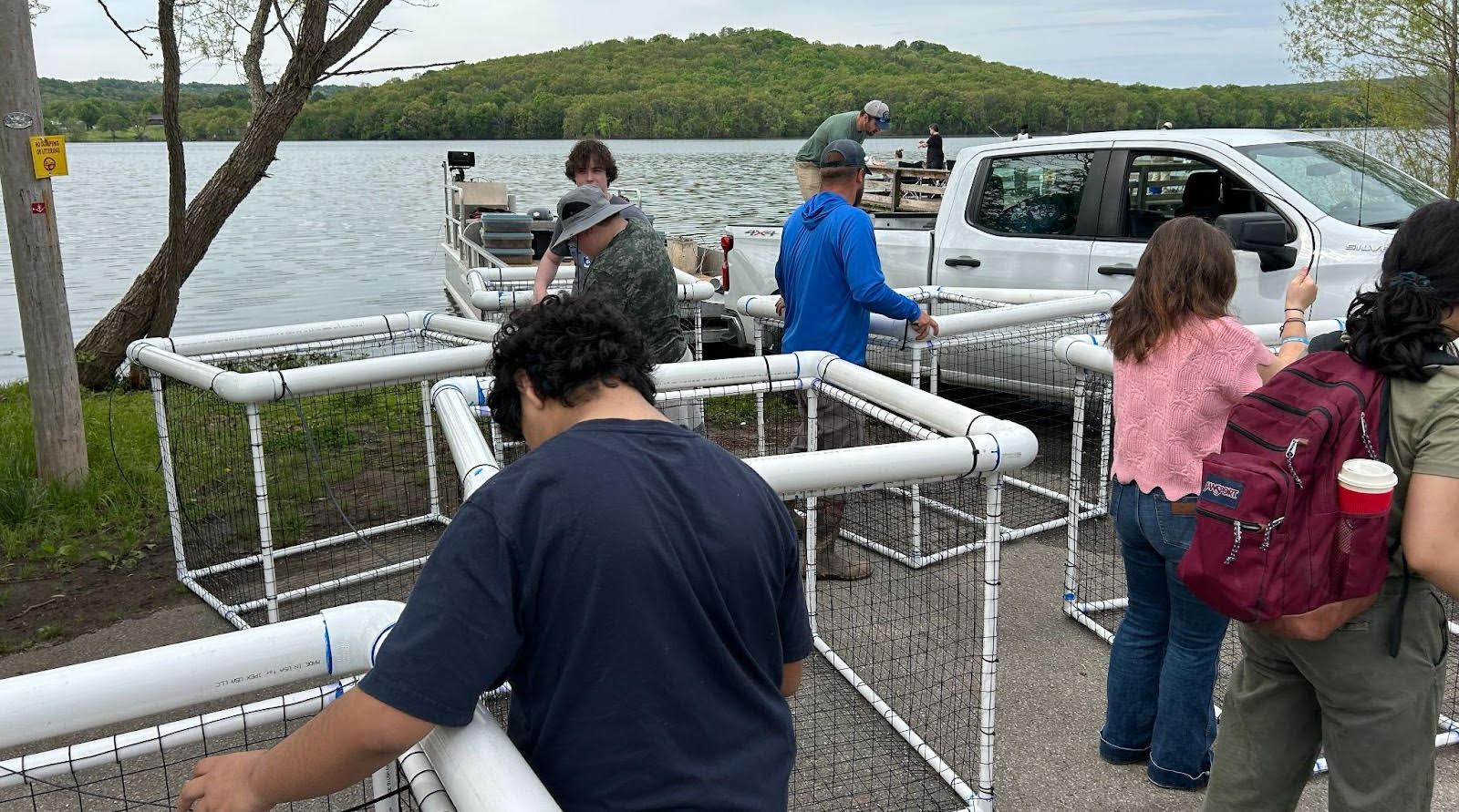
In April, students from Fayetteville High School and Har-Ber High School worked with AGFC staff and members of the Alliance to transplant all of the plants to floating nursery cages at Bob Kidd Lake. The cages, called “Arkansas cubes,” float at the surface but are anchored to a stationary post, letting the plants inside continue to grow while being shielded from aquatic herbivores like turtles. Seeds and stem fragments from the plants are distributed outside of the cages through wave action, establishing new colonies of vegetation.
According to District Fisheries Supervisor Jon Stein, this partnership addresses the declining condition of local fish habitats, a significant issue caused by the aging of many regional lakes and reservoirs.
“The natural loss of woody habitat, such as submerged trees, has contributed to a degradation of habitat quality in some of our older reservoirs,” Stein said. “The introduction of this new vegetation oxygenates water, offers nursery habitat for young gamefish and baitfish, attracts invertebrates that fish feed on, and creates ambush cover for larger predator fish like crappie and largemouth bass. The initiative allows students to apply their classroom knowledge to real-world problems, while offering community service and career exploration opportunities in natural resources.”
Keen noted two of the schools involved have been active in the AGFC’s School of Conservation Leadership Program and used the vegetation project to help earn their designation as a model school in achieving academic success in outdoor education.
“Well over 500 students in the Fayetteville School District were a part of the lessons and activities of this project,” Keen said.
In addition to a healthy outdoor learning environment and an innovative method to grab students’ attentions, the partnership offers the opportunity for students to see real-world professions in the conservation community that may interest them.
“We engage in a lot of theme programming that highlights professional careers to let students see what a future in that line of work might look like,” Keen said.
The high school students who helped transplant the pondweed and arrowhead plants were part of Fayetteville high school’s agriculture program, and, according to Keen, one of the participants who is getting ready to go to college said he is looking forward to studying conservation science for fisheries as a result of his exposure to this program.
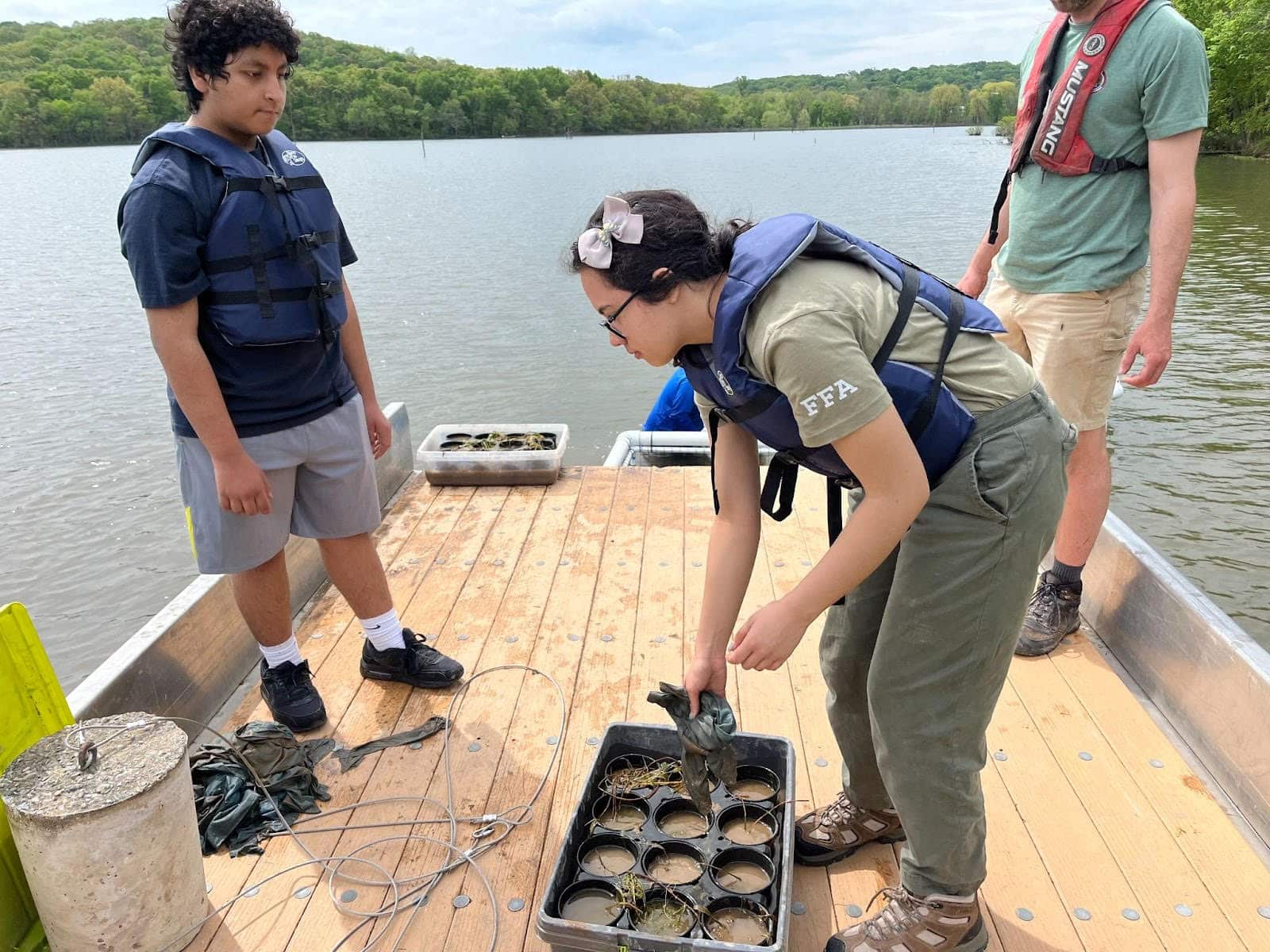
“We took 10 to 14 students out in two different runs to place the vegetation in the cubes, and I’m working with Mr. Stein to make another trip this summer with students from SOAR Academy, another school of conservation leadership in Fayetteville,” Keen said. “The project has the right components for students to work on throughout the year and learn many facets of the concept with hands-on experiences. It’s also place-based right here, locally. This isn’t a project where the students are learning about some coastal plants or something in Texas, this is something they can see that affects their own community right here in the Ozarks.”
Keen says he’s already gotten commitments from all of the schools to continue participation in the program next year and is excited to expand the program even more.
####
CUTLINES:
GROUP SHOT
Students from Har-Ber High School in Springdale and Fayetteville High School transplanted native plants to cages in Bob Kidd Lake as part of a larger school-based initiative. AGFC photo.
UNPACKING PLANTS
American pondweed was grown in greenhouses at four Fayetteville elementary schools to benefit local fisheries and teach students about aquatic life. AGFC photo.
BUILDING CUBES
Students and instructors built PVC Arkansas cubes to protect the plants and allow them to create new colonies at Bob Kidd Lake. AGFC photo.
TRANSPLANTING ON BOAT
Once Arkansas cubes were in place, students transplanted potted native vegetation to the lake. AGFC photo.
Recent News
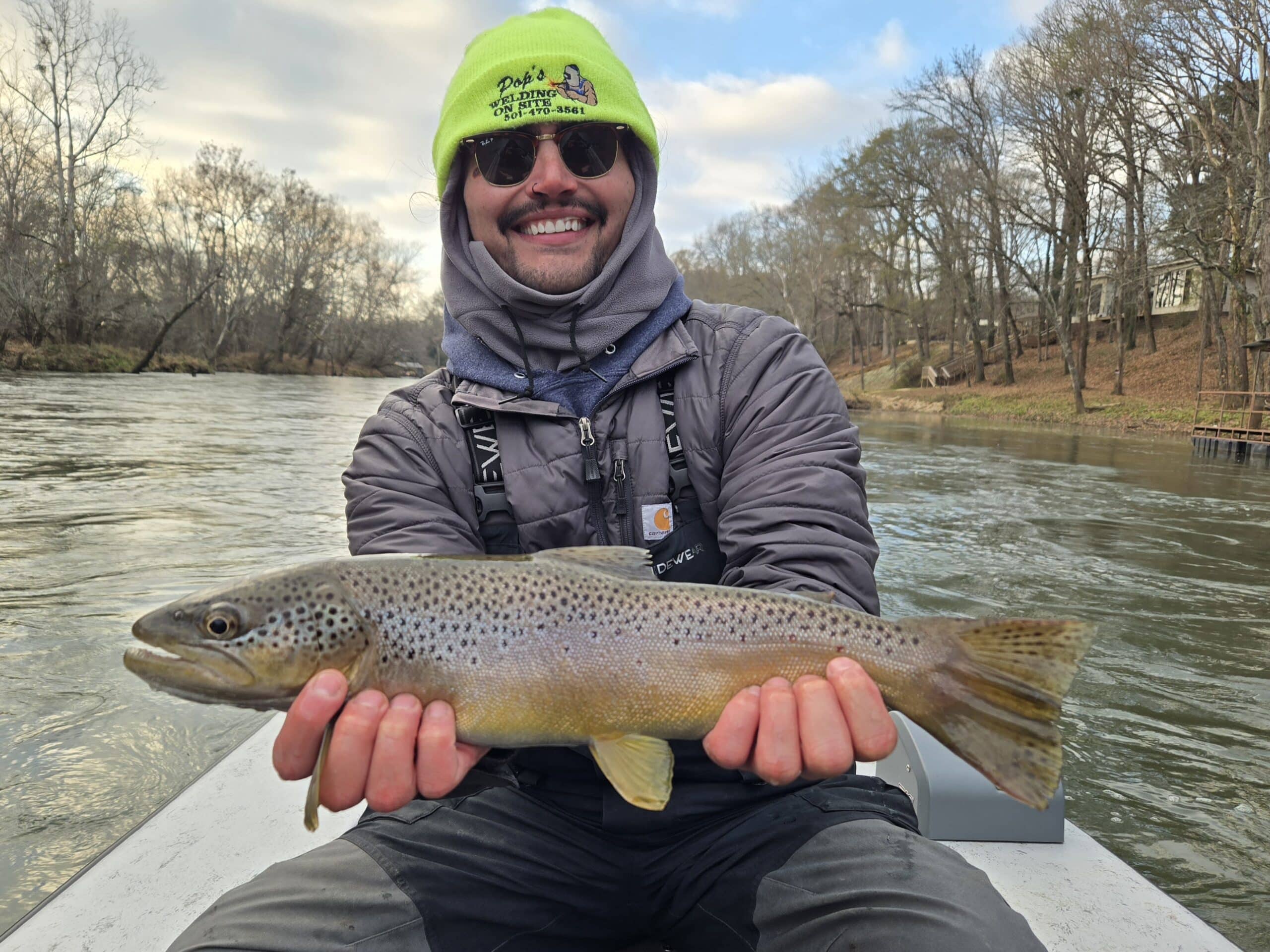
Arkansas Wildlife Weekly Fishing Report
Dec. 18, 2025
Subscribe to Our Weekly Newsletter E-mails
Don’t miss another issue. Sign up now to receive the AGFC Wildlife Weekly Newsletter in your mailbox every Wednesday afternoon (Waterfowl Reports are published weekly during waterfowl season and periodically outside the season). Fishing Reports arrive on Thursdays. Fill in the following fields and hit submit. Thanks, and welcome!

